The Intel Lakefield Deep Dive: Everything To Know About the First x86 Hybrid CPU
by Dr. Ian Cutress on July 2, 2020 9:00 AM ESTLakefield CPUs and Devices Coming To Market
With Intel teasing Lakefield from late 2018 and stating 2020 availability, naturally we had been expecting an announcement at some point this year, and in early June the company officially announced the two processors that would be coming to the Lakefield family. Technically this is four SKUs, which I’ll get on to.
Both the parts feature ‘Core i5/i3’ branding, however they will not fall into a traditional Core generation naming. So where Skylake was 6th Gen Core, Comet Lake was 10th Gen Core, these are just ‘Intel Core Processors with Intel Hybrid Technology’. Rolls off the tongue, doesn’t it.
Both CPUs are the same silicon underneath, just with different core frequencies and GPU configurations with the Core i3 having it partly disabled.
| Intel Lakefield Processors | ||||||||
| AnandTech | Cores | Base Freq |
1C Turbo |
nT Turbo |
Gen11 IGP |
IGP Freq |
DRAM LP4 |
TDP |
| i5-L16G7 | 1+4 | 1400 | 3000 | 1800 | 64 EUs | 500 | 4267 | 7 W |
| i3-L13G4 | 1+4 | 800 | 2800 | 1300 | 48 EUs | 500 | 4267 | 7 W |
Intel confirmed that the base frequency and all-core turbo values are unified frequencies across all the cores, while the single core turbo applies to the Sunny Cove core. Support for LPDDR4X-4267 is given for both processors, and is a frequency notch above the support found in Ice Lake. The graphics is wide and slow, running at only 500 MHz, and both CPUs have a TDP of 7W. The amount of PoP memory does not affect the TDP.
However, it’s the PoP memory that will provide each one of these processors with two variants. The memory for Lakefield is being provided by a third party (Intel won’t say who, so I guess we’ll find out when we put the CPU in acid), and assembly is done by Intel. Intel will offer both processors in 4 GB and 8 GB configurations, running at a maximum memory bandwidth of 34 GB/s, indicative of dual 16-bit memory controllers. So despite the frequency of the memory being higher than Ice Lake, Ice Lake can address 4x16-bit memory controllers, giving an overall higher memory bandwidth.
Intel will debut these two SKUs in its first generation of Lakefield. Even those these CPUs are a 1+4 configuration, operating mainly in a 0+4 as mentioned on the previous pages, Intel is placing them in the premium market spaces due to the increased complexity of construction but also on the basis of the low idle power. Intel claims a 2-3 mW idle power (initially said 2 mW, then said 3 mW, then settled on 2.6 mW, depending on who you ask) while in connected standby modes. This will help any systems using them achieve long periods of sleep modes without needing to worry about casual drain.
As a result, these CPUs will find homes in premium, always-connected laptops, such as the Samsung Galaxy Book S expected in markets this month, the Lenovo ThinkPad X1 Fold, coming later this year, and in the Microsoft Surface Book Neo.
Samsung Galaxy Book S
As per our announcement piece:
First teased by Samsung late last year, the Lakefield-based version of the laptop is set to join their existing Qualcomm 8cx-based model, swapping out the Arm SoC for x86, providing a very interesting point of competition if we’re able to compare the two in the same chassis. The Intel Galaxy Book S will be the first device to ship with Lakefield, putting the new processor to the test in seeing if Intel can match the kind of all-day battery life that the existing Galaxy Book S is known for.
Taking a look at the specifications, the Intel-based version of the Galaxy Book S is a spitting image of the Qualcomm version. Samsung appears to be using the same chassis here, so the 13.3-inch laptop retains the same dimensions as the current model, as well as the same two USB-C ports. The battery capacities are identical as well at 42 Wh, and I expect that the Intel model is also using the same 1080p LCD. Curiously though, the Intel model does end up being ever so lighter than the Qualcomm model – Samsung puts the former at 950g, 10g lighter than the 960g Qualcomm model.
| Samsung Galaxy Book S Family | ||
| Galaxy Book S (Intel) | Galaxy Book S (Qualcomm) | |
| CPU | Intel Core with Hybrid Technology 1x Sunny Cove (Core) 4x Tremont (Atom) |
Qualcomm Snapdragon 8cx 4x Kryo 495 Gold @ 2.84 GHz 4x Kryo 495 Silver @ 1.8 GHz |
| GPU | Intel UHD Graphics | Adreno 680 |
| Display | 13.3 Inch, 1920×1080 Full HD Touchscreen |
|
| Memory | 8 GB LPDDR4X | |
| Storage | 256/512 GB eUFS + microSD Card Slot |
256/512 GB + microSD Card Slot |
| Networking | Wi-Fi 6 (802.11ax) BT 5.0 |
Wi-Fi 5 (802.11ac) BT 5.0 |
| Modem | Discrete LTE Cat 16 |
Integrated Qualcomm X20 LTE Cat 18 |
| Battery | 42 Wh | |
| Ports | 2 x USB-C 1 x 3.5 mm (phono/mic) |
|
| Dimensions | 305.2 x 203.2 x 11.8 mm | |
| Weight (Approx) | 950g | 960g |
| Price (USD) | N/A | Starts at $999 |
As for memory and storage, because the memory is part of the Lakefield package, Samsung is only offering a single 8GB configuration here. Unfortunately Samsung’s spec sheet doesn’t list memory frequencies, so we’ll have to wait and see what Intel has Lakefield’s memory clocked at. Meanwhile Samsung provides the storage, using 256GB or 512GB of their eUFS flash memory. To my knowledge this is the first x86 laptop to ship with eUFS, reflecting the mobile roots of the devices Intel is targeting with Lakefield. Further storage expansion is then available through a microSD card slot.
One specification that’s notably missing from Samsung’s announcement is the expected battery life of the Intel-based model, and this is perhaps going to be the most interesting aspect of Lakefield. Intel has worked very hard to get their idle power consumption down to be able to match what Qualcomm has achieved with the 8cx, with the company claiming that Lakefield draws just ~2-3mW at idle. At the same time, however, Lakefield lacks an integrated modem, and as a result Samsung is relying on an Intel Cat 16 external modem here. So in the battle of the Galaxy Books, Qualcomm will have the advantage in regards to requiring fewer chips.
As for other wireless connectivity, the new Intel model will ship with a 2x2 Wi-Fi 6 radio, giving it an edge there over the Qualcomm model with Wi-Fi 5. And both models ship with Bluetooth 5.0 support.
Rounding out the package, the Intel-based Galaxy Book S has a 720p webcam, a built-in microphone as well as Dolby Atmos-badged stereo speakers co-designed with AKG. The laptop also has a Windows Hello-compatible fingerprint reader. Price is currently unknown.
Lenovo ThinkPad X1 Fold
From our news announcement coverage:
The new Fold is a true high-end Thinkpad, with a flexible 13.3-inch OLED display split across the two halves of the design, essentially becoming the size of a notepad when folded. This means that when unfolded, it offers 2x more screen real estate than a Samsung foldable smartphone. The construction of the foldable display includes metal frames and supports combined with carbon fiber plates. The hinge mechanism claims to provide friction free folding, but also allows for rigid support at a variety of angles when unfolded like a standard clamshell.
When folded, the device is just over an inch thick (27.8 mm) at its widest point, but when unfolded becomes only 7.8 mm thick, or 11.5 mm with the included cover. The reason that the folded dimension is more than 2x the unfolded is because there will be a slight ridge on the hinge where the fold is, so the display isn’t crisply folded.
Inside the unit beats the heart of a properly built laptop. We’ve got one of the first new outings for Intel’s Lakefield processor, featuring 1 big Sunny Cove core and 4 smaller Tremont Atom cores, combined with Intel’s Gen11 HD Graphics (the ones that come with Ice Lake, although it doesn’t mention frequencies or EUs). Memory is a full 8 GB of LPDDR4X-2133 with storage provided by a standard M.2 2242 NVMe drive, although Lenovo will offer variants up to 1 TB. There’s an inbuilt 5 MP camera, and the battery is a proper 50 Wh, good for 11+ hours according to Lenovo.
The exact specifications on the display is a 13.3-inch flexible OLED with a 2048x1536 resolution, with brightness up to 300 nits and color gamut support up to 95% of DCI-P3. Touch is also implemented.
For IO, the device has two USB Type-C ports (one USB 3.1, one USB 3.2), and a Displayport over Type-C port for external displays. There is also a SIM slot in order to use the onboard modem. Lenovo lists the modem as 4G/5G, although doesn’t state which modem this is – it’s likely to be Qualcomm’s X55 at this point. The device also supports 802.11ax and BT5.0.
The price according to Lenovo is $2499 for the 1 TB model. All units will come with an Active Pen and an external keyboard in the box, and altogether the unit weighs 999g / 2.2 lbs (cover included). The keyboard can be off the notebook, or placed on one half of the screen:
The Lenovo ThinkPad X1 Fold looks like a crazy device that I’d love to test. Lenovo has a tentative date of ‘Mid 2020’ for the product, which will likely depend on display availability as well as Intel’s production of Lakefield processors.
Microsoft Surface Book Neo
Less is known about the Surface Book Neo. It was presented by Microsoft at an event in October 2019, featuring dual 9-inch screens and a fully rotatable hinge, and according to Microsoft’s website should be available by the end of the Holiday 2020 season.
The Neo is a true dual screen device, rather than something foldable, but will still use the external keyboard. We expect some form of pen support, and it should be running Windows 10X, a special build of Windows built for multi-screen devices like this one. However, it has been reported that Windows 10X has been delayed until next year due to the additional complexities of working from home during the pandemic as well as a focus more on single screen devices.


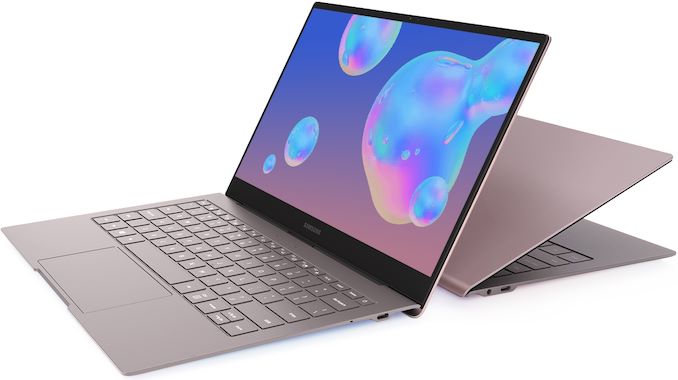
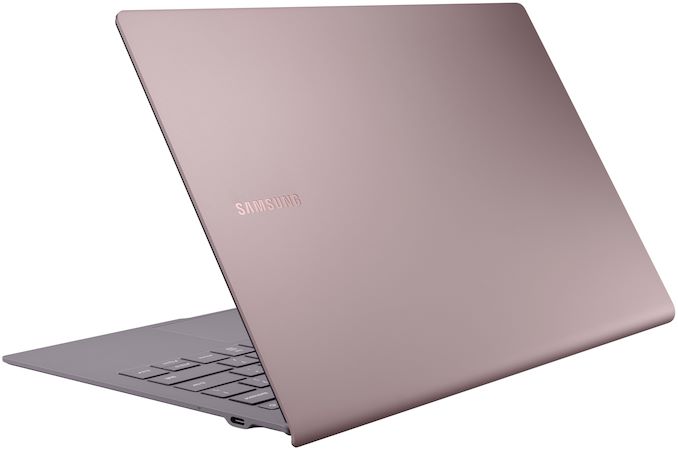
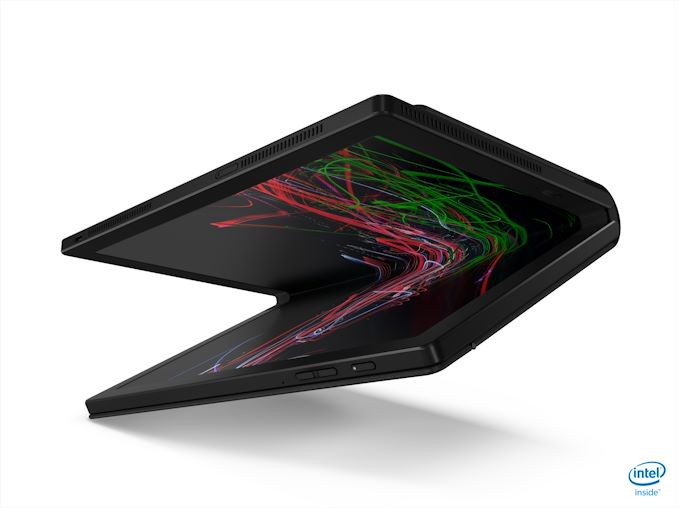
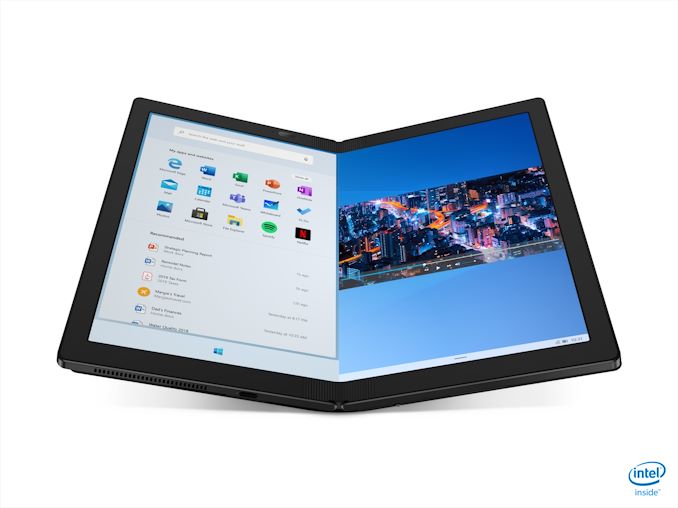
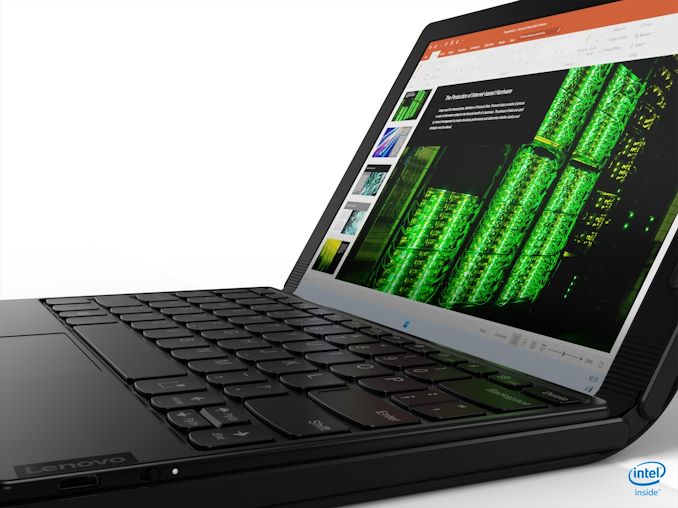
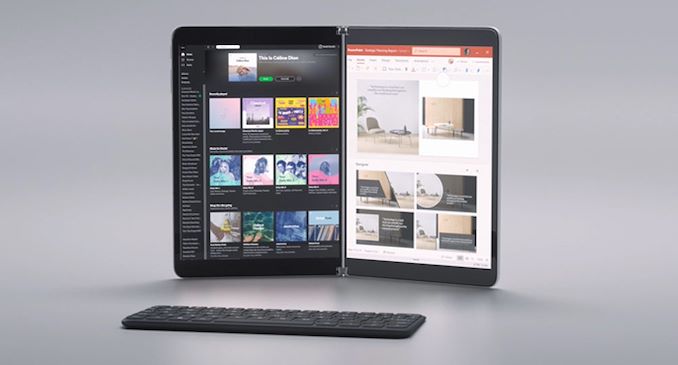








221 Comments
View All Comments
ichaya - Sunday, July 19, 2020 - link
SPEC is useful for some IPC comparisons, but it's questionable to use it for much else. PG bench in the phoronix link has a 50%+ speedup with SMT which is basically inline for perf/W/$ with Graviton 2 instance. The worst case is Casandra, but everything else is within ~5% for similar perf/$ if not comparable perf/W too since comparing TDP is workload dependent as well and not measured by most tests.XZ and Blender are ~45% faster with SMT in your openbenchmark link, but that's a 3900X (12-core/24-thread), so any comparisons to server chips (64-core Graviton 2) are unfair given power consumption and core differences. 4 times the L3 is also wrong, it's 50% more L2+L3 with half the cores and SMT if you're being fair between m6g.16xlarge or c6g.16xlarge and c5a.16xlarge.
Quantumz0d - Friday, July 3, 2020 - link
Intel has lost it's edge. And this whole portable nonsense is reaching peaks of stupidity. Those Lakefield processor equipped machines will be close to $1000 for their thin and ultra light 1 USB C / 1 3.5mm audio jack, what a fucking disaster.I had owned one ultrabook which is Acer Aspire S3 and I used to even play DotA2 on that, and after 1-2 years the whole machine heated like crazy, I repasted, no dice, cleaned fans, nothing. And then battery also stopped holding a charge. Now what ? That stupid POS is dead, not even worth, meanwhile a Haswell machine with rPGA socket, and an MXM slot from 2013 and guess what ? the GPU got an upgrade to Pascal 1070 MXM from Kepler 860M.
All these BGA trash machines will no longer hold charge nor have their serviceability, older ultrabooks atleast had a 2.5" drive, newer ones have NVMe SSDs, these 2 in 1 trash like most of the Surface lineup is almost impossible to even repair or service. And because of this thin and light market Windows 10 has been ruined as well to cater to this bs phenomenon and desktop class OS is hit with that ugly Mobile UX which lacks powerful software options, navigation and all. Plus you don't even get to repair it yourself due to non available servicing parts.
With Apple HW same thing, full BGA not even NVMe SSDs, and now they also started to make their Mac OS look and feel like iOS trash. This whole mobile and ultra portable garbage is ruining everything, from gaming to the HW.
PandaBear - Monday, July 6, 2020 - link
They don't want to cannibalize their highly profitable x86 business, so they have to give you crap for what you want if you want to pay less. The problem right now is other companies don't have to deal with this political monopoly BS and they are eating Intel for lunch.Most monopolies die this way: when their monopoly business is obsoleted and they hang on to it to milk the cow till it dies.
yeeeeman - Friday, July 3, 2020 - link
Tigerlake should also be in the pipeline soon, right?Deicidium369 - Saturday, July 4, 2020 - link
Benchmarks showing it destroying AMD Renoir at single core, and within 17% on MT - despite half the cores...https://wccftech.com/intel-10nm-core-i7-1165g7-cpu...
watzupken - Sunday, July 5, 2020 - link
"Benchmarks showing it destroying AMD Renoir at single core, and within 17% on MT - despite half the cores...https://wccftech.com/intel-10nm-core-i7-1165g7-cpu...
Till we see the actual performance, you need to take these leaks with a lot of salt. The test bed are not revealed in leaks and it is not possible to ascertain if it is a realistic number. This we don't have to speculate for long since it should be out pretty soon.
pugster - Friday, July 3, 2020 - link
Lakefield's 2.5w standby sounds kind of high. ARM cpu is probably much lower than that.Ian Cutress - Monday, July 20, 2020 - link
2.5 mWProDigit - Friday, July 3, 2020 - link
Qualcomm has proven that a single fast core isn't enough. Intel needs to at least do 2 fast cores. Then add at least 6 atom cores.But if Intel wants to compete with AMD, it'll need to create a quad core big setup, with at least 10 to 12 atom cores.
Any less will be too little. These are too little as is, competing against the 3000 series of AMD.
It would be awesome, if Intel could make a 25W quad core cpu, paired with an additional 40 watts on atom cores. That's about 20 additional cores, or a 24 core cpu.
abufrejoval - Friday, July 3, 2020 - link
A great article overall, very informative, deeply technical while still readable to a layman, very little judgement or marketing, allowing readers to form their own opinion: Anandtech at its very best!Not mentioned in the article and not covered by the comments so far is that the main driver behind Intel’s low power SoCs has been Apple: This is what Intel thought Apple would want and be happy with!
And if you contrast it to what Apple will now do on their own, that makes me want to sell all my Intel shares: Good thing I never had any.
This is another Intel 80432 or i860, tons of great ideas engineered into parts, but great parts don’t automatically make a convincing whole.
And I simply don’t see them iterate that into many more designs over the next years at competitive prices: With that hot-spot governed layout between the two all the flexibility and cost savings a chiplet design is supposed to deliver goes away and you now have two chips in a very tight symbiosis with no scale-up design benefits.
It’s a Foveros tech demo, but a super expensive one with very little chance of currying favors even at ‘negative revenues’ in the current market.
X86 is not competitive in terms of Watts or transistors required for a given amount of compute. It didn’t matter that much in PCs, the competing servers were much worse for a long time, but in the mobile space, phones to ultrabooks, it seems impossible to match ARM, even if you could rewind the clock by ten years and started to take BIG-little seriously. Lakefield is essentially a case study for Core being too big and thus power hungry and Atom failing on performance.
ISA legacy is still holding x86 from dying completely, but that matters less and less at both the top of the performance range with servers and at the bottom in mobile, where the Linux kernel rules supreme and many userlands and ISAs compile just fine.
Gaming is a hold-out, but perhaps the last generation consoles on x86, gamer PCs alone too much of a niche to determine the future.
The desktop will switch to who offers the bigger, longer lasting bang for the buck and there is a very good chance that will be ARM next.
Microsoft may be allowed to blunder along with lackluster ARM64 support for a couple more days, but Apple’s switch puts them under long deserved pressure. A nice Linux/Android/Chromium hybrid ultrabook running whatever Office could get things moving quicker… at least I hope that, because I’d never want to be forced into the bitten Apple…. by these corporate decision makers I see already twitching.
No chance I’d ever let a new Apple into my home: The ][ was the last good one they made.